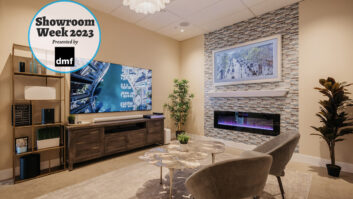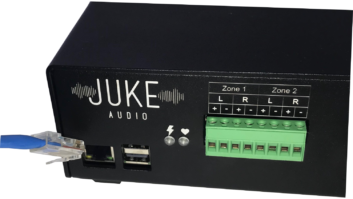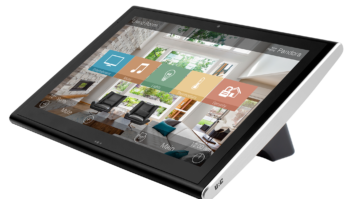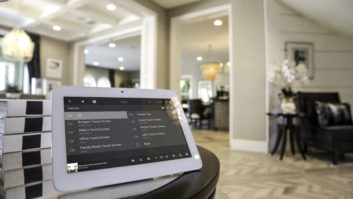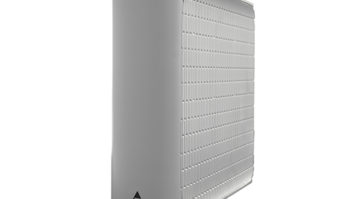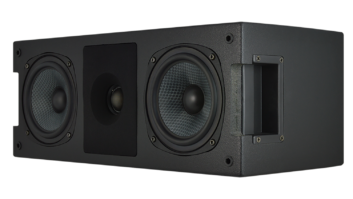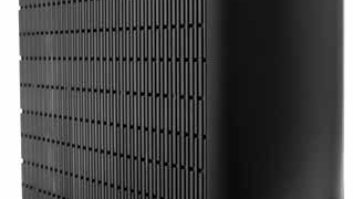Kudos: Terrific design packs a ton of features into a 1U package; excellent audio quality; fully completes Control4’s audio offerings
Concerns: None
Multi-room audio distribution remains a hallmark of the custom installation industry. Through a combination of speakers, amplifiers, sources, and audio matrix distribution devices, distributing music throughout a home is a crucial part of most installations. To deliver a complete entertainment and control solution, automation companies have long provided an audio component in their line-ups, but audio frequently isn’t the focus.


To seriously up its audio game, in early 2017 Control4 acquired Triad, along with its 30 years of experience in the high-end, custom residential audio market. At CEDIA 2017, Control4 announced that it would be heavily leveraging this new relationship by launching a full line of Triad-branded audio components, and by making Triad’s entire inventory available to Control4’s extensive dealer base.
The first of these new products included audio matrix switches, power amplifiers, and the single-zone Triad One Streaming Amplifier (review available at residentialsystems.com). Control4 has since added the AMS-8 audio matrix switch and AMP-8 8-zone power amplifier to its line, which are reviewed here.
Prior to the Triad acquisition, Control4 only offered a 16×16 audio matrix. While serviceable, it was frequently overkill for most audio distribution projects. The new lower priced and far superior AMS-8 solves this issue with eight inputs and eight outputs, fitting into the wheelhouse of most installs. For larger projects, the AMS-24 triples the ins and outs with a 24×24 layout in a 2U design, while only costing twice that of the AMS8. For amplification, there is a single-zone amp capable of delivering up to 300 watts in mono, a 4-channel, and the 8-channel model reviewed here. The AMS-8 along with the AMP-8 make a potent combo, perfectly replacing all-too-common outdated 6- and 8-zone audio systems.
Both the matrix and amplifier are 1U rack height and include rack ears for mounting, and feature incredibly minimalistic front panels, with nary a single button or control on the front of either unit. They do include some handy status LEDs, with the amplifier indicating if a zone is active, in overcurrent protection, or in thermal shutdown, and the matrix displaying audio output, connection to Director, firmware update status, etc.

The business ends of these units are around back, where Control4 designers wasted no space on either component. In addition to eight analog RCA inputs, the matrix also adds four very badly needed digital inputs, including both Toslink optical and coaxial digital. This lets installers take advantage of the two digital audio outputs on an EA5 without having to add in a DAC. Only eight inputs can be active at any time, with assignments made in Composer during programming. The digital inputs only accept stereo PCM signals, so adjust the output of your source device accordingly. The matrix also features eight analog RCA outputs and two 12-volt triggers to feed the amp. Since the matrix is a “smart” device, it connects to the network via Ethernet cable and dutifully announces itself via Control4’s SDDP, simplifying the process of adding it to a project.
The amplifier’s rear panel is equally well outfitted. There are the expected eight RCA audio inputs, with the Zone 1 input serving double-duty as a global, with dipswitches selecting if a zone uses the local or global input. Each zone has a trim pot for adjusting input gain along with a clip indicator. All 32 speaker wires screw neatly into two 16-position Phoenix-style connectors that accommodate up to 14-gauge wire. A power mode switch selects whether the amp responds to the 12-volt trigger (preferred), turns on with audio, or remains on constantly. Have more amp channels than you need, or a zone that would benefit from some extra juice? No problem, as you can bridge any zone to deliver up to 200 watts.
Composer offers quite a bit of flexibility for configuring the matrix to maximize performance in each zone. First, you get the basic tone controls like bass, treble, balance, and loudness. Additionally, you have access to several EQ curves (rock, pop, jazz, classical). There are also multiple EQ curves when using Triad’s line of in-wall/ceiling speakers. Beyond all of that, there is also a five-band parametric EQ for each zone, enabling you to take measurements within a listening room and seriously address audio performance issues.
Other super-handy features include setting a zone’s maximum volume and mono-summing a zone, which is excellent in large open spaces where true stereo listening isn’t practical. Also, remember the wonky programming and binding required if you wanted to use a powered subwoofer in a zone? Yeah, that’s gone. Now you can make a 2.1 audio zone by linking two outputs together! It’s almost like the designers at Control4 actually spent time in the field installing this stuff.
When Control4 launched its EA line-up of controllers, they had an eye toward audio performance by including high-resolution audio handling up to 192 kHz/24-bit, which the matrix handles. It also sports some serious audio performance specs that would give many high-end receivers a run for their money, and absolutely punish other multi-room audio solutions. The amps utilize ICEpower modules designed to Triad’s spec to deliver high-current, high-power audio while running cool and efficient.
I listen to music every morning in the bed and bathroom when I’m getting ready, and what I really noticed was deeper, punchier bass from this combo, making the speakers sound like they had received a significant bass upgrade. The system’s incredibly fast wake-up time was also evident, going from Standby to On quicker than my Pandora playlist can begin. This makes it perfect for handling announcements or doorbell chimes.
I only have five audio zones in my home, so I bridged three zones on the AMP-8, and the extra power was definitely noticeable. The 10-inch Origin Acoustics D104 speakers in my dining room sounded richer and fuller, and my outdoor pool speakers played at neighbor-disturbing levels at just 65-percent volume. Also appreciated is the very smooth 0.5 dB volume adjustments on the matrix, allowing me to precisely dial-in the desired level.
With Control4 now natively supporting Deezer, iHeartRadio, Napster, Pandora, Sirius/XM, Spotify, Tidal, and TuneIn, the EA5 becomes a potent house-wide audio distribution platform when paired with these new components. Coupled with a NAS drive and Control4’s “MyMusic” driver, a user has an unlimited variety of music all within Control4’s ecosystem. Also, consider that, at $2,900 MSRP, this duo is more than a grand cheaper–and far easier to manage in a rack–than eight Sonos Connect:Amps.

